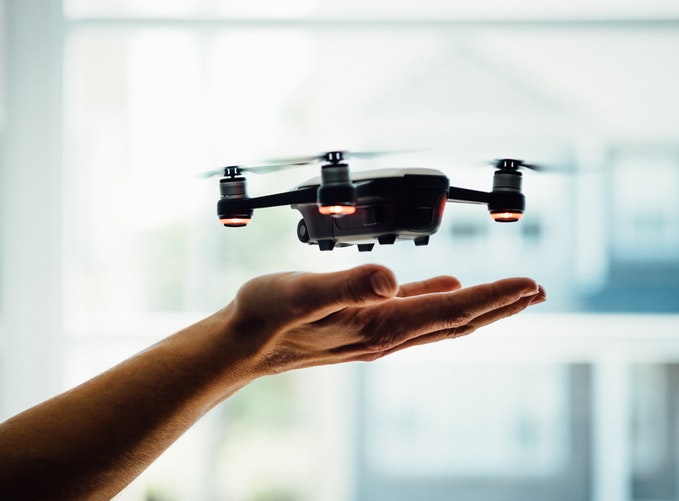Samara Al-Tekreeti
Marketing Operations @ in4mo
Published on May 24, 2019 | 3 mins read
 These little unmanned flying objects are no longer restricted to only one segment, and use cases include:
These little unmanned flying objects are no longer restricted to only one segment, and use cases include:
- Delivery of goods to your home
- Filming in the movie industry
- Exploration of natural resources
- Industrial inspections
- Delivery of medical help in disaster areas
Drones are also starting to play a major role in the insurance industry, especially for underwriting and property claims.
For instance, insurance companies can use drones for:
- Roof damage inspection:
Roofs are considered one of the hardest places to do an inspection; the activity is risky for inspectors, especially if the roof has a steep slope.
Nowadays, insurance inspectors can use drones to fly over a building and capture the smallest details of a damaged area, from the safety of the ground. - Post-disaster assessments (flood, earthquake or wildfire):
These places tend to be unreachable or may be restricted by civil authorities for a few days. A drone can fly without any need for an airport or special permission, and capture detailed pictures to assess any damage - Fraud monitoring:
For example, you can compare images before and after a hurricane to consider only those claims caused by that natural event.
Insurance benefits in multiple ways
Using drones can greatly impact insurance companies’ business:
-
- Reducing claims costs:
Instead of sending several inspectors to inspect the roofs in a damaged area, you can send a drone operator to make all the assessments in one visit - Enabling faster interventions:
No need to wait for inspectors to arrive at the site, you can have the drone in place whenever you need it - Reducing injury risks:
Reaching inaccessible places safely; for instance, after fire or storms. - Providing more detailed data:
Drones provide a great amount of precise data to make insurers’ and inspectors’ work easier - Improving customer satisfaction:
By making the claims handling process easier and faster
- Reducing claims costs:
Those benefits are undeniable, but it doesn’t mean that adding drone capabilities to an insurance operation is easy.
Some challenges remain…
Capturing data is great, but it’s not enough.
Insurance companies need tools to seamlessly integrate the images, videos, and related data captured by drones into their workflows.
They also need new tools to analyse this rich data and, for instance, automatically estimate the damages
Heavy regulation can be a stumbling block:
In some countries drones are easy to get and use, while in others regulations are getting more and more restrictive.
Another area of concern is finding qualified drone operators and integrating them into the insurance workflow.
Conclusions
There is no doubt that drones can greatly benefit insurance claims and underwriting operations.
The technology is constantly improving and getting cheaper, the saving of cost and time is obvious, and the data captured could even feed new products driven by artificial intelligence technologies.
How can we do it?
Creating own specialised drone teams is of course possible for the bigger insurance companies; cost and usage are the most likely issue in that scenario.
Adding drones into the loss adjuster toolbox would help deploy these capabilities faster, but would require clear process and training to do right.
Integrating third party drone operators into an insurance partner network is the most flexible way to deliver the promised benefits, but at a cost.

Learn more:
